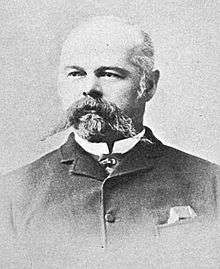Bendire's thrasher
| Bendire's thrasher | |
|---|---|
_(6960355495).jpg) | |
| Scientific classification | |
| Kingdom: | Animalia |
| Phylum: | Chordata |
| Class: | Aves |
| Order: | Passeriformes |
| Family: | Mimidae |
| Genus: | Toxostoma |
| Species: | T. bendirei |
| Binomial name | |
| Toxostoma bendirei (Coues, 1873) | |
Bendire's thrasher (Toxostoma bendirei) a perching bird native to the southwestern United States and northern Mexico, is a medium-sized species of thrasher.
General information
Bendire's thrasher is 23–28 centimetres (9.1–11.0 in) long, with a long tail and a short bill. It is colored grayish-brown on its upperparts and has paler underparts with faint dark streaks. The eyes are bright yellow, and the tips of the tail are tipped with white.
Because of its similar coloration to the curve-billed thrasher, the two birds are very easy to mistake for one another. The Bendire's thrasher's shorter beak is a distinguishing feature when comparing mature birds, but it is still easy to misidentify an adult Bendire's thrasher as a young curve-billed thrasher as its beak has not grown to its mature length.
The Bendire's thrasher lives in the brush-filled deserts and valleys and drylands of the south-western United States, mainly along the southern border that Arizona and New Mexico shares with Mexico, (the Madrean sky islands, mountain range sky islands of the northern Mexican range: Sierra Madre Occidental).
The Bendire's thrasher constructs a cup-shaped nest from twigs, lining the interior with grass stems and rootlets. It is usually placed in a cactus or an otherwise thorny desert shrub or tree. The female lays three or four eggs, which are pale green to blue in color, and speckled with brown and purple.
Bendire's thrasher, like the majority of thrashers, feeds on small ground-dwelling insects.
Discovery

On July 28, 1872 U.S. Army Lieutenant Charles Bendire was on a hike through the brushy deserts near Fort Lowell, Arizona. While exploring the desert Bendire, an avid bird enthusiast, spotted a bird that was unfamiliar to him. Lieutenant Bendire shot the bird, which appeared to be a female thrasher, and sent its remains to the Smithsonian Institution in Washington, D.C.
The remains of the specimen were examined by Elliott Coues, who was perplexed to its species. After several of Coues's colleagues looked at the bird they believed it was just a female curve-billed thrasher, but Coues did not agree with that conclusion. Coues believed that the thrasher was a species that was yet unknown to science and sought out Bendire for additional information on the bird. Bendire replied to Coues with his affirmation that he also believed that it was a new species.
Lieutenant Bendire soon sent back a second specimen of the thrasher, a male, and details about its habits and eggs, all which were different from those of a curve-billed thrasher. Finally convinced, Coues named the new thrasher species Bendire's thrasher in the honor of Charles Bendire.
References
- ↑ BirdLife International (2012). "Toxostoma bendirei". IUCN Red List of Threatened Species. Version 2013.2. International Union for Conservation of Nature. Retrieved 26 November 2013.
Further reading
Book
- England, A. S. and W. F. Laudenslayer, Jr. 1993. Bendire’s Thrasher (Toxostoma bendirei). In The Birds of North America, No. 71 (A. Poole and F. Gill, Eds.). Philadelphia: The Academy of Natural Sciences; Washington, D.C.: The American Ornithologists’ Union.
Articles
- Buttery RF. (1971). Bendires Thrasher Nesting in Colorado. Colorado Field Ornithologist. vol 9, no 29.
- Chapman FM. (1981). Notes on the Plumage of North American Birds. American Birds. vol 35, no 2.
- Darling JL. (1970). New Breeding Records of Toxostoma-Curvirostre and Toxostoma-Bendirei in New-Mexico. Condor. vol 72, no 3. pp. 366–367.
- England AS & Laudenslayer WFJ. (1989). Distribution and Seasonal Movements of Bendire's Thrasher in California USA. Western Birds. vol 20, no 3. pp. 97–124.
- Farnsworth A. (2001). WatchList species as viewed through the Christmas Bird Count database. American Birds. vol 102, pp. 29–31.
- Farrand JJ. (1990). Lieutenant Bendire's Thrasher. American Birds. vol 44, no 3. pp. 351–352.
- Kaufman K & Bowers R. (1990). Curve-Billed Thrasher and Bendire's Thrasher. American Birds. vol 44, no 3. pp. 359–362.
- Mills A. (1992). First confirmed Canadian sight record of Bendire's thrasher, Toxostoma bendirei. Canadian Field Naturalist. vol 106, no 3. pp. 404–405.
- Sodhi NS. (1987). Occurrence of Bird Nests on Jumping Cholla Cacti. Western Birds. vol 18, no 4.
- Sodhi NS. (1992). Growth of nestling merlins, Falco columbarius. Canadian Field Naturalist. vol 106, no 3. pp. 387–389.
- Zink RM, Dittmann DL, Klicka J & Blackwell-Rago RC. (1999). Evolutionary patterns of morphometrics, allozymes, and mitochondrial DNA in thrashers (genus Toxostoma). Auk. vol 116, no 4. pp. 1021–1038.
External links
- BirdLife - Bendire's Thrasher
- Bendire's Thrasher photo gallery CalPhotos
- Bendire's Thrasher photo gallery VIREO
- Photo-High Res; Article "Migratory Bird Center"-Smithsonian
[
